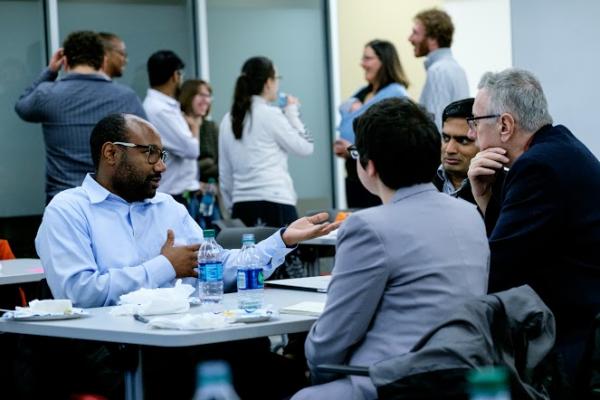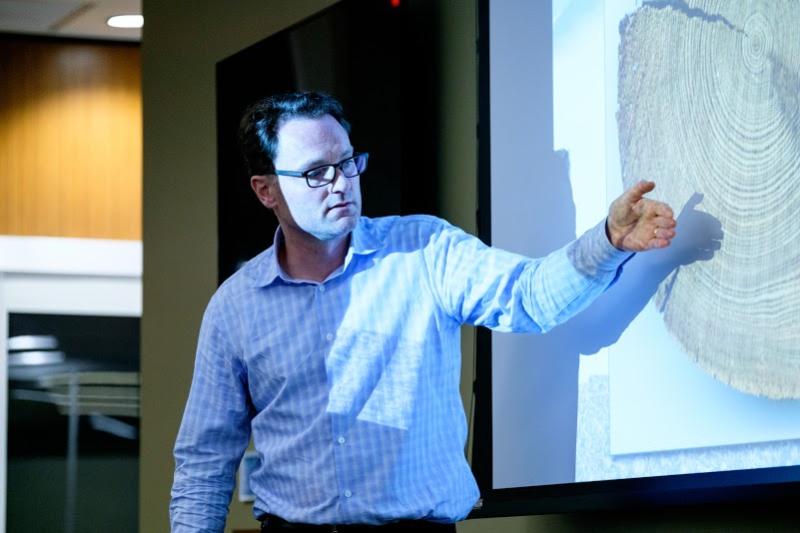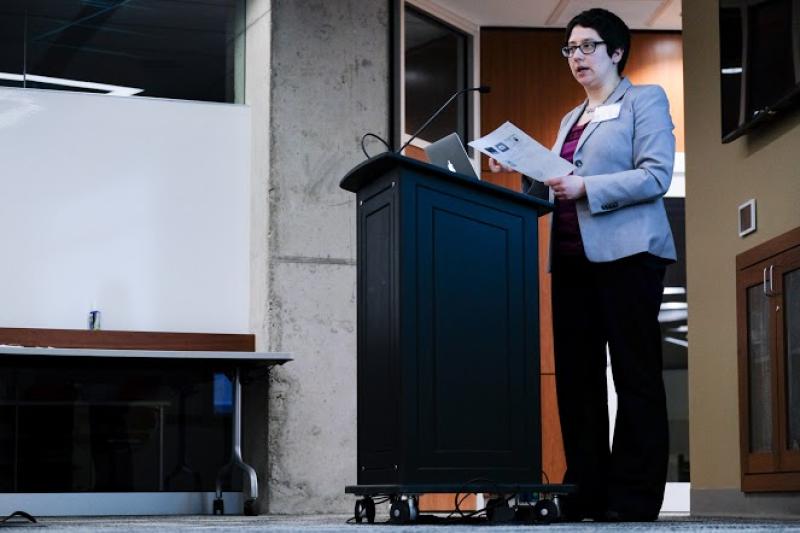March STEAM Exchange: Preservation

The March STEAM Exchange was filled with interactive discussion around the topic of preservation. There were four very interesting presentations that discussed diverse topics including how data storing, American Indian studies, biology, and dance all relate to preservation.
The night started off with Emily Frieda Shaw, Assistant Professor and Head of Preservation and Reformatting at the University Libraries, discussing data reformatting and storage. She discussed how preserving old forms of data in today’s world is difficult because of the huge changes in technology in recent years, but also how that technology makes it easier to store information for the future. The follow-up discussion included how different disciplines use old data for current research. Many STEAM members talked about how in their discipline using old data was very beneficial in observing changes over time, and others discussed how using more recent data is expected in their field of study.
The second presenter of the night was John Low, Assistant Professor of Comparative Studies and American Indian Studies at Ohio State’s Newark campus. John spoke about his American Indian family background and the different perspectives of the Battle of Fort Dearborn. He tied in preservation by discussing Fort Dearborn Massacre Park, which was named after the battle, and by talking about the importance of preserving Native American people and stories.
Next up we had Joel Barker, Assistant Professor in the School of Earth Sciences and from Byrd Polar and Climate Research Center. Joel discussed how an ancient forest in Northern Canada was found and had been naturally preserved for millions of years. He and his colleagues used cellulose from the tree trunks to determine what temperature the trees grew at. In this area, the change to colder temperatures over time has made it nearly impossible for this kind of vegetation to grow again. Therefore, finding that this type of vegetation grew approximately 3 million years ago in this region was a remarkable discovery, and it shows how things in nature can be preserved for millions of years.
Our final speaker of the night was Hannah Kosstrin, Assistant Professor in the Department of Dance and Melton Center for Jewish Studies. Hannah talked about how her studies of Labanotation, a movement notation system that shows how body parts move in space, time, and duration, has allowed her to create an app for IPads that allows the recording of dance movement. This can then lead to the preservation of those dances. She also discussed how dance is central to cultural identity and has been embodied in and preserved through ancient artifacts.
Overall, the March STEAM Exchange was a very interesting and informative meeting that pulled in four different disciplines to discuss preservation. A lot of interactive discussion between the presenters and other STEAM members took place after each presenter, which further enhanced the conversation. For more information regarding our next STEAM Exchange, which will take place April 21st, click here!


